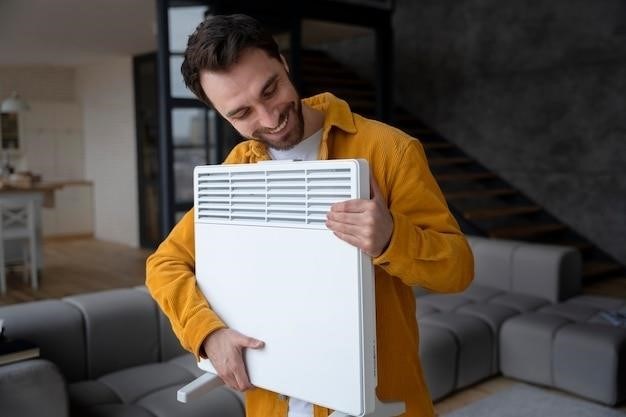CSW200UL Gate Operator Manual⁚ A Comprehensive Guide
This manual provides a comprehensive guide to the LiftMaster CSW200UL swing gate operator, covering everything from installation and operation to troubleshooting and maintenance. It’s your one-stop resource for understanding and utilizing this powerful and reliable gate system.
Introduction
The LiftMaster CSW200UL is a heavy-duty swing gate operator designed for high-traffic applications like gated communities, commercial complexes, and private estates. It features a non-scissor action swing arm to significantly reduce the risk of injury, setting it apart from other gate operators. This manual serves as your guide to understanding and operating this robust system, ensuring safe and efficient gate operation for years to come. The CSW200UL is a part of the LiftMaster brand, a renowned name in gate automation and security solutions. LiftMaster is a division of the Chamberlain Group, a company with over 50 years of experience in providing reliable and innovative access solutions. This manual will cover everything from installation and setup to daily operation, maintenance, and troubleshooting. By carefully following the instructions and adhering to safety guidelines, you can maximize the performance and longevity of your CSW200UL gate operator.
Key Features and Benefits
The CSW200UL gate operator boasts a range of features designed to enhance security, convenience, and reliability. Its non-scissor action swing arm provides a safer operation, minimizing the risk of injury. The operator is also equipped with LiftMaster’s renowned Omni technology, ensuring smooth and quiet operation. The CSW200UL comes in various models with different horsepower ratings, allowing you to choose the best fit for your specific gate size and weight requirements. Its robust construction and durable components ensure long-lasting performance even in demanding environments. The CSW200UL is compatible with a variety of accessories, including remote controls, keypads, and safety sensors, allowing you to customize the system to your needs. By incorporating advanced safety features, the CSW200UL complies with stringent industry standards, providing peace of mind and ensuring a safe and secure environment.
CSW200UL Models and Variations
The CSW200UL gate operator is available in different models to accommodate various gate sizes and weight requirements. The CSW200501UL is a 1/2 HP model designed for gates up to 18 feet long and weighing up to 1,600 lbs. The CSW200101UL is a 1 HP model, suitable for heavier gates up to 22 feet long. These models can be further differentiated by their features, such as the inclusion of battery backup, integrated solar power, and additional safety sensors. The CSW200UL series also includes variations with different mounting options, allowing for customization based on your gate’s design and installation requirements. Consult the LiftMaster website or your authorized dealer for detailed specifications and model availability.
Safety Features and Compliance
The CSW200UL gate operator is designed with safety as a top priority. It incorporates features that meet or exceed industry standards, including UL325 compliance for residential and commercial applications. Key safety features include the non-scissor action swing arm, which minimizes the risk of injury. The system requires monitored secondary entrapment devices, such as photo eyes, to detect obstacles in the gate’s path. These sensors stop the gate’s movement if an obstruction is detected, ensuring safety for pedestrians and vehicles. The CSW200UL also includes adjustable force settings, allowing users to tailor the gate’s opening and closing speed to suit their needs and minimize potential hazards. LiftMaster provides detailed information on safety precautions and recommended installation practices in their user manuals. It is essential to read and understand these guidelines to ensure safe and compliant operation of the CSW200UL gate operator.

Installation and Setup
Installing the CSW200UL gate operator requires careful planning and adherence to the provided instructions. The manual details a step-by-step process, ensuring a secure and efficient installation. Before starting, you must ensure the gate’s construction and usage class match the operator’s capabilities. Preparing for installation involves assessing the site, verifying power supply availability, and gathering necessary tools and materials. Connecting power and wiring requires following the specific diagrams and instructions in the manual to ensure proper electrical connections and prevent potential hazards. Mounting the operator involves securing it to the gate post, ensuring stability and alignment. The manual provides clear instructions for mounting the operator to ensure proper operation and longevity. Programming remotes and accessories involves configuring the system to work with desired remote controls and other accessories, allowing for convenient and secure gate operation.
Preparing for Installation
Before you begin installing the CSW200UL gate operator, it is crucial to prepare the installation site adequately. This includes careful site assessment to ensure proper placement and clearance for the operator and gate. You must verify the availability of a suitable power supply, ensuring it meets the operator’s electrical requirements. Gather all the necessary tools and materials, such as screwdrivers, wrenches, and mounting hardware, as specified in the installation manual. Additionally, it is essential to review local building codes and regulations to ensure compliance. Familiarize yourself with safety precautions and warnings outlined in the manual to ensure a safe and efficient installation process. This meticulous preparation will significantly contribute to a successful and trouble-free installation of your CSW200UL gate operator.
Connecting Power and Wiring
Connecting power and wiring to the CSW200UL gate operator requires careful attention to safety and proper procedure. First, disconnect power to the installation area before working with any electrical components; Identify and locate the operator’s power supply terminal, ensuring it matches the specified voltage and amperage requirements. Connect the appropriate wires to the terminals, paying close attention to the color coding and polarity indicated in the manual. Ensure all wire connections are secure and properly insulated. It is crucial to use wire connectors and junction boxes that are suitable for outdoor environments. After completing the wiring, double-check all connections for accuracy and safety before re-energizing the system. Remember to follow all local electrical codes and regulations during the wiring process. Properly executed power and wiring connections are critical for the operator’s reliable and safe operation.
Mounting the Operator
Mounting the CSW200UL gate operator requires a sturdy and level surface that can support its weight and the forces generated during operation. Before mounting, verify that the operator’s mounting surface is compatible with the provided mounting hardware. Use appropriate tools to secure the operator firmly to the mounting surface, following the manufacturer’s instructions and any local building codes. Ensure the operator is mounted at the correct height and angle, allowing for smooth gate operation and preventing any potential interference or obstructions. When installing on a concrete or masonry surface, use appropriate anchors or fasteners designed for the specific material. Properly mounted and secured, the operator will provide a stable and reliable foundation for the gate’s movement, ensuring its safe and effective operation over time.
Programming Remotes and Accessories
Programming remotes and accessories for the CSW200UL gate operator is a straightforward process. Follow the instructions provided in the operator’s manual to learn how to add new remotes or accessories to the system. The manual will guide you through the steps, including entering programming mode, selecting the desired option, and confirming the changes. You can also find detailed instructions and troubleshooting tips online on the LiftMaster website. Ensure that the remotes and accessories you are using are compatible with the CSW200UL system. Remember that each remote or accessory may have its own unique programming sequence. Take note of the specific steps outlined in the manual to ensure successful programming.
Operation and Maintenance
The CSW200UL gate operator is designed for smooth and reliable operation. To ensure optimal performance and longevity, regular maintenance is essential. The manual outlines the recommended maintenance schedule, including lubrication of moving parts, inspection of the gate and operator for wear and tear, and cleaning of the system. It’s also crucial to regularly check the battery status for backup power and ensure that the safety features are functioning correctly. By following the maintenance guidelines, you can minimize the risk of malfunctions and ensure that your gate operator functions seamlessly for years to come. If you encounter any issues or have questions, consult the troubleshooting section in the manual or contact LiftMaster support for assistance.
Daily Operation and Troubleshooting
The CSW200UL gate operator is designed for ease of use. To ensure smooth daily operation, it is essential to understand the basic functions and troubleshooting procedures. This section of the manual guides you through the steps of opening and closing the gate using the remote control, keypad, or other authorized access methods. It also addresses common operational issues, such as slow opening or closing, gate not responding to commands, or unexpected stopping during operation. Each problem is addressed with clear and concise troubleshooting steps, enabling you to identify the cause and resolve the issue quickly. The manual also highlights the importance of proper gate alignment, ensuring the gate moves smoothly and safely.

Regular Maintenance and Inspections
Regular maintenance and inspections are crucial for ensuring the safe and reliable operation of your CSW200UL gate operator. The manual outlines a comprehensive maintenance schedule, including recommended intervals for routine checks and cleaning. It emphasizes the importance of inspecting the gate’s mechanical components, such as the swing arm, hinges, and rollers, for wear and tear. The manual also advises on cleaning the operator’s motor, control board, and other electronic components to prevent dust and debris buildup. Regularly inspecting the gate’s safety features, such as the photo eyes and entrapment devices, is essential for maintaining the system’s safety standards. The manual provides detailed instructions on how to properly test and adjust these features. By following these maintenance procedures, you can extend the life of your CSW200UL gate operator and ensure its continued safety and functionality.
Troubleshooting and Repair
This section of the manual provides valuable guidance for troubleshooting and repairing common issues with the CSW200UL gate operator. It offers a comprehensive list of potential problems, ranging from simple malfunctions like a jammed gate to more complex issues such as electrical problems or software errors. For each problem, the manual provides a step-by-step troubleshooting guide, helping you identify the cause and suggest possible solutions. It also includes helpful tips for diagnosing and resolving common errors. In addition to troubleshooting tips, the manual offers instructions on how to perform basic repairs, such as replacing fuses, cleaning contacts, or adjusting settings. However, it strongly advises against attempting complex repairs without professional assistance, emphasizing the importance of contacting LiftMaster support for more advanced issues. By following the manual’s troubleshooting and repair guidelines, you can quickly address most problems and restore your gate operator to full functionality.
Common Problems and Solutions
This section provides a detailed overview of common problems encountered with the CSW200UL gate operator and offers practical solutions. It covers a range of issues, including gate movement problems, remote control malfunctions, and electrical issues. For each problem, the manual provides a clear description of the symptoms, possible causes, and recommended solutions. This includes steps for troubleshooting the problem, such as checking connections, testing components, and adjusting settings. The section also provides valuable insights into preventing future problems, emphasizing the importance of regular maintenance and following safety guidelines. By equipping users with the knowledge to diagnose and resolve common issues, this section empowers them to maintain optimal gate operation and minimize downtime.
Contacting LiftMaster Support
This section provides comprehensive information on how to contact LiftMaster support for assistance with the CSW200UL gate operator. It includes detailed contact information, such as phone numbers, email addresses, and website URLs. The manual also outlines the best time to contact support, depending on the urgency of the issue. It emphasizes the importance of having the model number and serial number of the operator readily available for faster assistance. The section also offers insights into the types of support services available, such as technical assistance, troubleshooting guides, and repair services. It encourages users to utilize the available resources and contact LiftMaster support for any issues they cannot resolve independently.
Resources and Downloads
This section provides valuable resources and downloadable materials for CSW200UL users. It highlights the availability of online manuals and documentation, including user guides, installation instructions, and troubleshooting tips. The manual directs users to specific websites or platforms where these resources can be accessed. It also emphasizes the importance of having the correct model number for accessing relevant information. Additionally, the section features information on technical support and FAQs, outlining various channels for obtaining assistance, such as online forums, knowledge bases, and dedicated customer support lines. It encourages users to explore these resources for quick solutions and comprehensive information about the CSW200UL gate operator.
Online Manuals and Documentation
For easy access to comprehensive information about the CSW200UL gate operator, LiftMaster provides a wealth of online manuals and documentation. These resources are readily available on their website and include user guides, installation instructions, troubleshooting tips, and safety guidelines. To ensure you access the correct information, it’s crucial to identify the specific model number of your CSW200UL. The website often features a search function or a dedicated model list to locate relevant resources. These online materials offer step-by-step guidance on various aspects of the CSW200UL gate operator, empowering users to understand and effectively utilize their system.
Technical Support and FAQs
LiftMaster understands the importance of providing reliable support to its customers. They offer a dedicated technical support team that is readily available to assist with any questions or concerns regarding the CSW200UL gate operator. This team can be reached through various channels, including phone, email, and online chat. Their expertise covers a wide range of issues, from installation and programming to troubleshooting and maintenance. To enhance the support experience, LiftMaster also provides a comprehensive FAQ section on their website. This section addresses common questions and provides solutions to frequently encountered issues. This valuable resource empowers users to self-resolve many issues without needing to contact technical support directly.
The LiftMaster CSW200UL gate operator represents a robust and reliable solution for securing residential and commercial properties. Its powerful motor, advanced safety features, and user-friendly design make it an ideal choice for high-traffic applications. By carefully following the instructions outlined in this manual, you can ensure the safe and efficient operation of your CSW200UL system. Remember to perform regular maintenance and inspections to maintain optimal performance and extend the life of your gate operator. If you encounter any difficulties, reach out to LiftMaster’s dedicated technical support team for assistance. With proper care and attention, your CSW200UL gate operator will provide years of dependable service, enhancing security and peace of mind for your property.



























